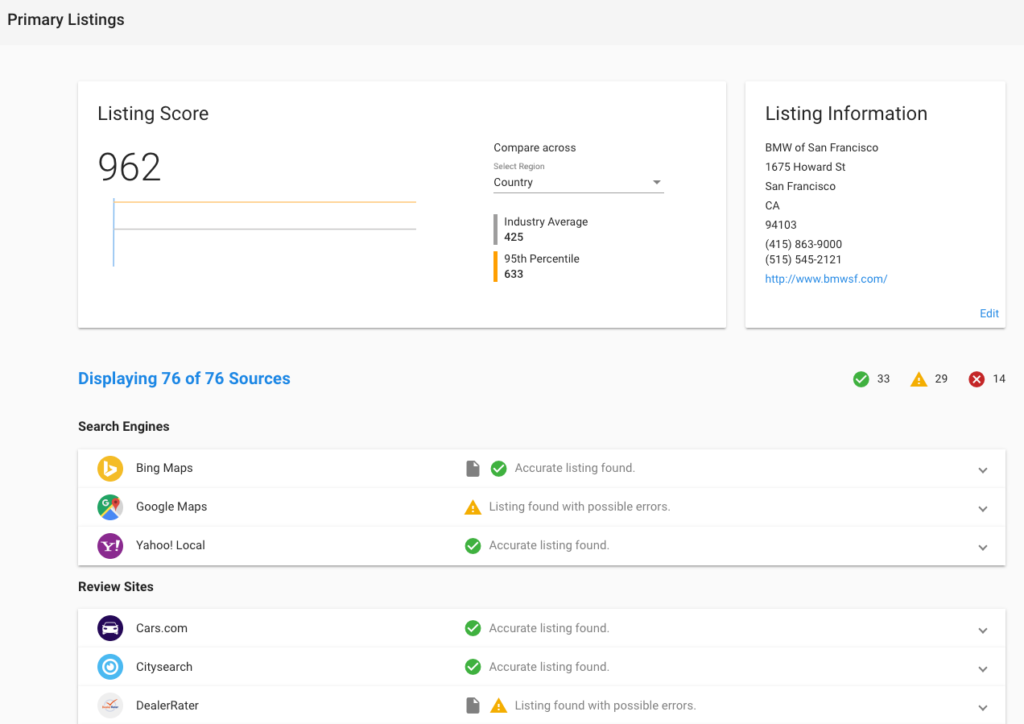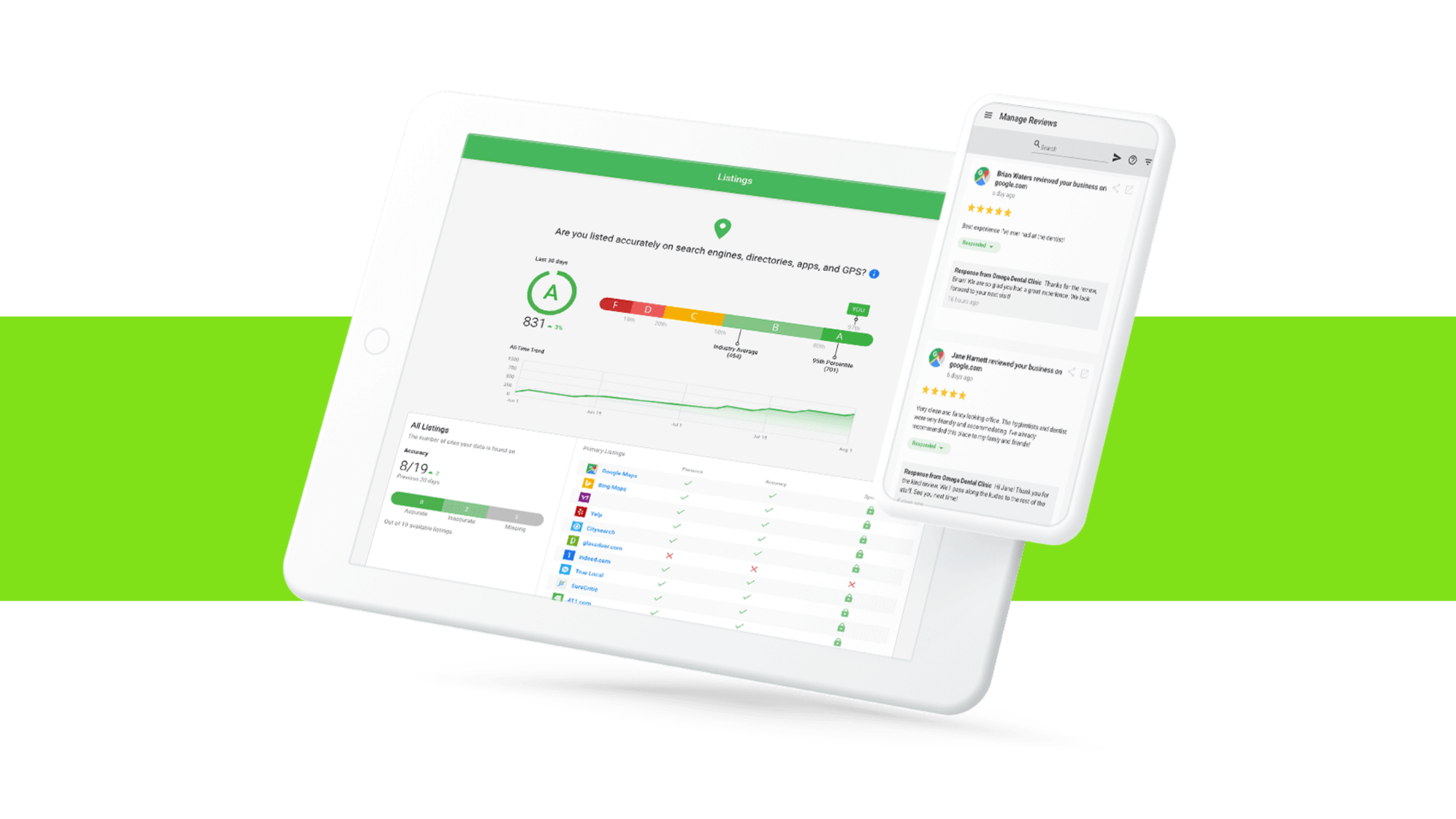Listing Builder Overview
Be found online before your competitors. Listings in Reputation Management gathers all the locations on the web where your business listing can be found: major search engines, local review sites, online business directories, and social networks. This feature allows you to see where the business is listed, detect and fix any errors or add new listings.
The Primary Listings tab allows your business to:
- Review your Listing Score and compare it to the industry average and across different regions
- Monitor your business’s online listings for accuracy and to detect possible errors or missing listings
- Navigate to the appropriate source to view or edit that listing
- Refresh the listing to refresh with the most up to date changes
- Choose to Mark this listing as correct to ignore false errors
- Verify as the only listing for source to mark the listing as correct and stop the system from fetching other results
- Remove this match if the listing pulled in does not belong to their business

The Listing Score is an evaluation of your business’s accurate Primary Listings and Citations. Each listing source is assigned a score based on how popular the site is.
For example, having an accurate listing on a popular site like Google Maps will greatly influence your Listing Score.
How To Increase Your Listing Score:
- Verify your listings
- Fix any found errors in the Primary Listings tab
- Create new listings and citations
How To Verify Your Listings:
Go Settings > Listings and check that the listing sources relevant to your business have been selected.
Go to the Primary Listings page and review all of the listings found for your business. Here you can check for potential errors and edit the listing if needed.

Showing when a listing is potentially missing (Reputation Management and Multi-Location Business App)
Beside listings in Reputation Management > Listings and Multi-Location Business App > Listings, you may see a small badge indicating that the listing is ‘Potentially Missing.’ This will be shown when a listing can no longer be found, and it is suspected that it was removed or is otherwise missing from the source.
What should your client do? Click View to confirm that the listing is missing. If it is missing, click Remove listing.
This will alert you if a listing was removed on the source so, once a new listing is created, it can be properly monitored once again.
How does Listing Distribution work?
Listing Distribution submits your business information to the main data aggregators:
- Neustar Localeze
- Data Axle
- Foursquare
When multiple sources have consistent business data, two outcomes occur:
- Search engine crawlers, like Google’s WebCrawler, finds the same information in multiple places and adds more confidence to their business data
- Good backlinks are created with more referring sources to the business’ website creating better SEO.
What is a data aggregator?
How often can I make changes to my business profile?
How often are listings sent to the data aggregators?
What if a business has duplicate listings — how does Listing Distribution take care of those?
How long does Listing Distribution take?
Why is Listing Distribution a yearly subscription?
Online directories get business information from a huge number of sources, including:
- Business owners enter their own information
- Government sources
- User-generated content (UGC)
- Google sources (MapMaker, Places, etc)
- Data aggregators
However, the most importantly weighted information in the U.S. comes from the major data aggregators.
More Questions? We have more answers! Get in touch with us today.

